Photos, videos and documents related with the local culture
DIMITRIA FESTIVAL IN THESSALONIKI GREECE (2 GENIKO LIKIO HORTIATI - P2 ACTIVITIES)
In Thessaloniki every year during October the festival Dimitria takes place, which includes a large number of cultural activities and attracts the interest of the inhabitants and the tourists.
With the city of Thessaloniki as the starting point, the festival Dimitria brings cultures from around the world closer: from Iran to Cuba, from Belgium to China, from Hungary to Ireland. Theatrical performances, concerts, visual arts, photography and cinema, main events and other side events compose the festival’s core-mosaic, at the centre of which Humanity stands dominant; Humanity, which – despite having faced hardships, difficulties and failures – continues to dream and believe in a brighter future.
You can find more information about the festival at the following website:
https://dimitria.thessaloniki.gr/?lang=en
EDUCATONAL VISIT AT THE ART EXHIBITION “ALEXANDER IOLAS: THE HERITAGE” (2 GENIKO LIKIO HORTIATI – P3 ACTIVITY)
On the 15th of November 2018 we visited the art exhibition “Alexander IOLAS: The Heritage” which was held at the Museum of Modern Art in Thessaloniki. Alexander IOLAS was a famous Greek art collector of the 20th century and a very good friend of the artist Giorgio de Chirico. With constant love for the work of art as an object, IOLAS kept his reflexes to artistic pursuits after the war, when there was a need to create a new cultural reality. Especially in the 1960s and 1970s, the innumerable exhibitions he presented demonstrated his decisive action in the international artistic environment, as well as his support for the new artistic expression. His significant contribution to international art can be briefly summarised by the number of galleries he founded, his promotion of artists all over the world, the unstoppable momentum of his activities, his crucial role in the establishment of the European Surrealists in America, as well as that of many other young artists. A close friend of his until the very end, Andy Warhol, was discovered by IOLAS.
During our visit we admired works of surrealistic art and discussed with the guide the hidden aspects and meanings of these pieces of art. At the end of our visit we participated in a workshop, where each pupil created his/her own surrealistic piece of art and presented it to the others. This was a great experience as we had the challenge to let our imagination run wild and free and create our own work of surrealistic art!
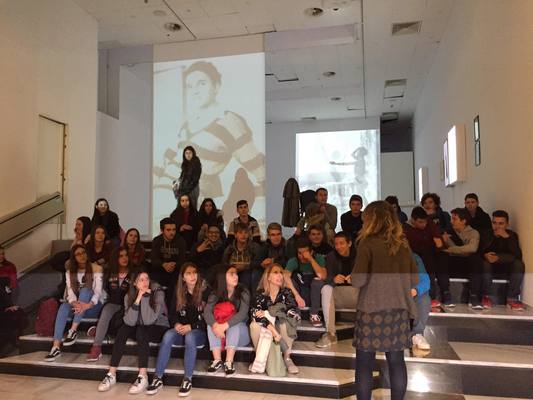
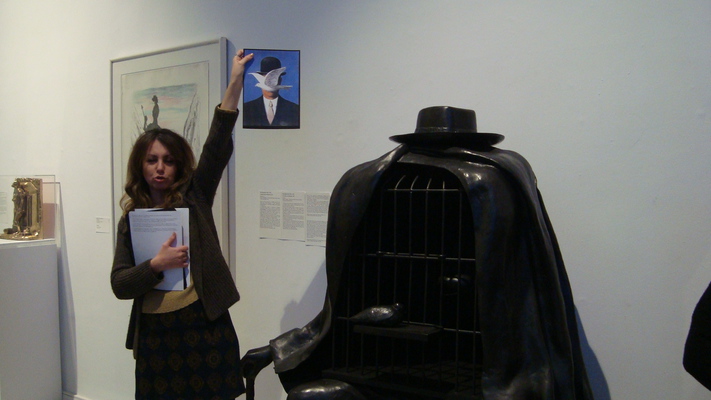
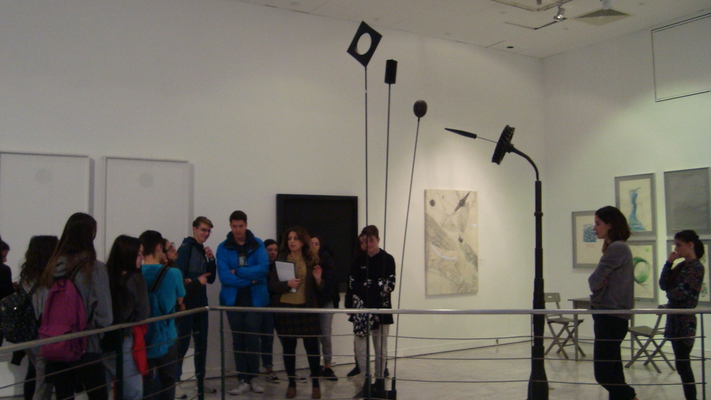
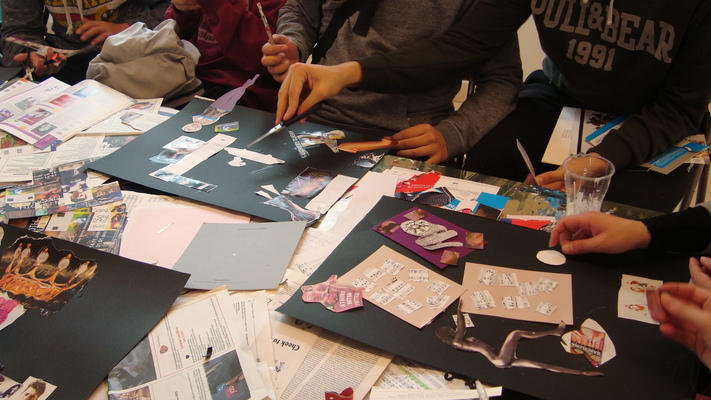
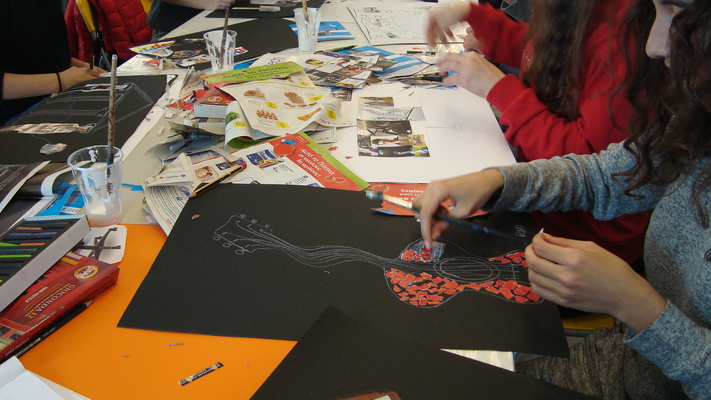
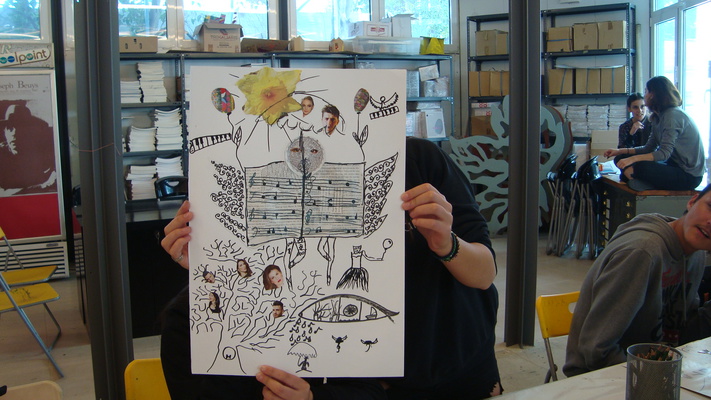
WATCHING THE PLAY “THE CURIOUS INCIDENT OF THE DOG IN THE NIGHT-TIME" (2 GENIKO LIKIO HORTIATI – P3 ACTIVITY)
On the 15th of November 2018 we watched the play “The Curious Incident of the Dog in the Night-Time” by the National Theatre of Northern Greecebased on the novel by Mark Haddon. The story begins like a detective novel, when little Christopher, this special autistic boy, tries to investigate the mysterious death of his neighbour’s dog. Passionate about solving the mystery, he faces various unexpected secrets and slowly becomes a protagonist in a story that will change not only his life... but also the lives of everyone around him. Christopher is a lonely boy, he doesn’t feel accepted by his peers, he can’t understand people’s feelings at all, he doesn’t understand the rules of behaviour... he doesn’t understand metaphor in speech at all, nor does he grasp jokes and irony... he can’t lie... he can’t bear to be touched at all... However, Christopher has many more abilities than all of us, the others…
According to one of the pupil’s review on the play: “The performance aroused the interest of the audience and there was absolute silence besides that in the audience there were only students. The play was fascinating due to the fact that it caught the attention of the audience. The interpretation of the protagonist was quotable. The actor’s rendering of an autistic adolescent was really representative. The delicate moves of the protagonist showed exactly what is like to be an autistic person; When the actor’s shoes where unlaced he showed professionalism, he stayed focused and when the chance was given to him, he tackled the problem. In addition to the above, the direction was excellent. All the actors played very well and all the dialogues were interesting, especially when the mother was narrating the story. At the end, all the subconsciously messages of the play moved deeply the audience.”
You can find more information on the play at the following website:
https://www.ntng.gr/default.aspx?lang=en-GB&page=2&production=48096
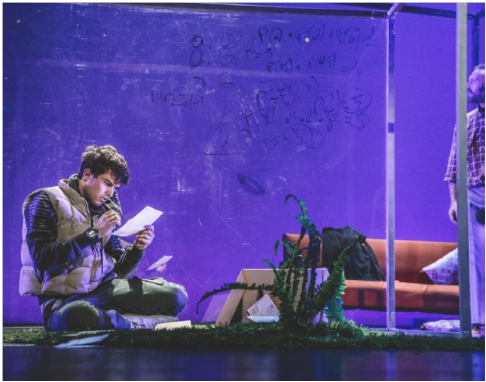
EDUCATIONAL VISIT AT THE EXHIBITION “VAN GOGH ALIVE – THE EXPERIENCE” (2 GENIKO LIKIO HORTIATI - P4.3. ACTIVITY)
On 18 December 2018, the Greek pupils visited the exhibition “Van Gogh Alive – The Experience” at the Thessaloniki International Exhibition Center (TIF). The magnificent exhibition was an amazing experience as it helped us, as pupils, to approach and understand the ideologies and works of a great artist, Vincent Van Gogh in an interactive way. It was a glamorous spectacle addressed to all ages. At the beginning of the presentation, the tour guide spoke to us about the life of the artist and then described and explained to us some of his most important works. Then we entered an area where they played interactively, with giant screens that animated masterpieces, the paintings of Van Gogh and many of his quotes, while we were simultaneously listening to classical music properly customized to the climate in this area. As a pupil said about our visit: “This exhibition brings the viewers to a stunning, vibrant world of the creator, and this leads the viewer to interaction with the artist and his works. We were very lucky to have a chance to watch a show like this.”
You can find more information about the exhibition at the following URL:
https://www.vangoghalive.gr/indexen.html
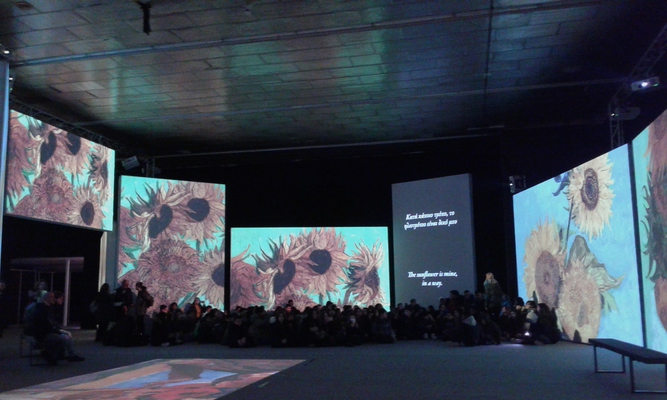
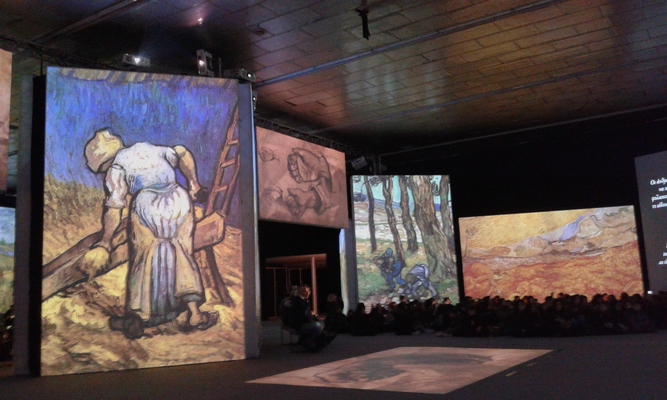
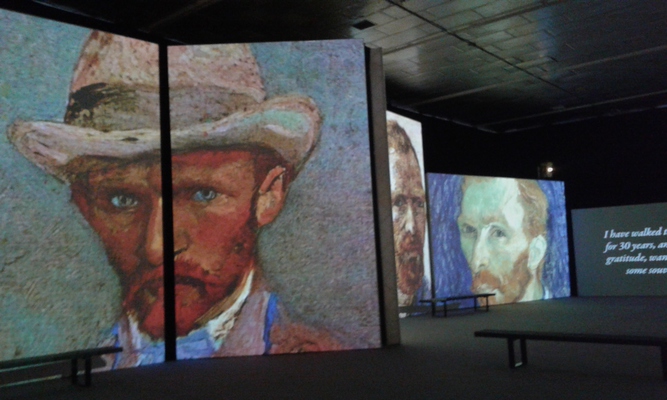
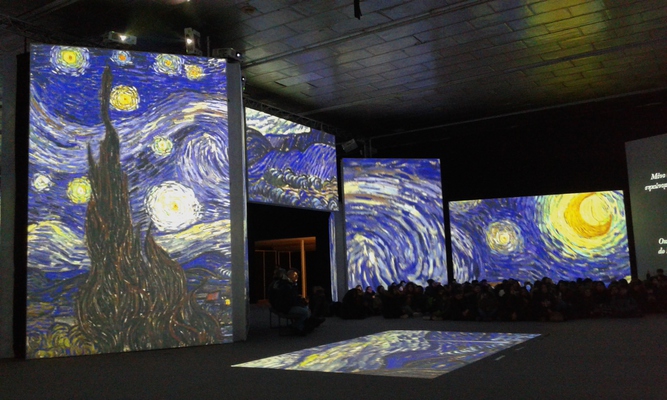
IMPORTANT EXPONENTS OF LOCAL CULTURE (2 GENIKO LIKIO HORTIATI - P5.2. ACTIVITY)
In January 2019 the Greek pupils studied the activity of important exponents of local culture (intellectual, artists, poets...) and produced a relative presentation.
In specific, they studied four personalities of the Greek culture:
- Manos Hatzidakis, composer, maestro, pianist, poet
- Nikos Kazantzakis, novelist, translator, poet, philosopher, journalist, screenwriter
- George Seferis, poet-diplomat
- Melina Merkouri, actor and politician
GR_P5_2_FAMOUS GREEK ARTISTS.pdf
WATCHING THE THEATRICAL PERFORMANCE "BAL YOU...!!!" (2 GENIKO LIKIO HORTIATI - P6.4. ACTIVITY)
On 14 March 2019 the Greek pupils of the B’ Class watched at school the theatrical performance "BAL you…!!!".
The performance "BAL you...!!!" presents snapshots of a teenager's life and contact with his parents. Through his relationship with technology we see a world being created, his own. How much do parents understand this world? What misunderstandings or conflicts are created? Will a common language be found? Will they ever agree?
The story came alive with the particular theatrical technique of the "platform": in a platform of 1m x 1.60m, three actors without sets, costumes, lighting, only with their body and voice created images, landscapes, worlds, with tingling rhythms and rhythms, as well as a series of vivid characters.
The Director's, Sofia’s Paschou, note: “In "BAL You ...!!!" there is the eternal battle between child and parent. Two opposing worlds try to understand, co-exist. A teenager learns, grows, lives in the world of his room, the world of technology, his own world, while his parents try to find a "door", a "crap" in this room in this world.”
A theatrical journey-stimulating the creative imagination of modern children who are at risk of losing the ability to create their own images as they are victims of bombardment of prefabricated and standardized products. At the end of the show, the pupils had the opportunity to revive the worlds of history or others, theirs. And all this on the magical platform!
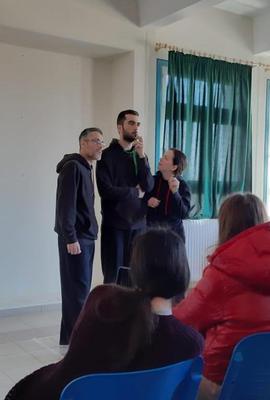
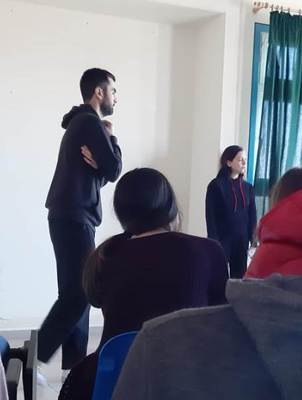
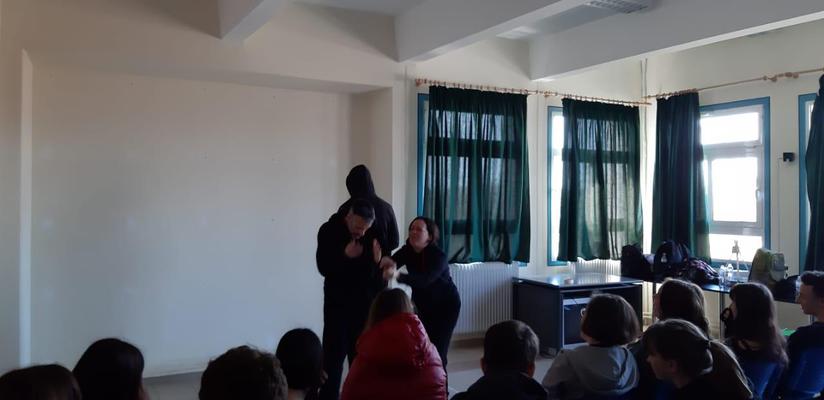
EDUCATIONAL VISIT AT THE EXHIBITION: "WΗΕΝ ΤΗΕ LIGHT DANCES, I SPEAK FAIRLY. GIORGOS SEFERIS AND HIS POETRY THROUGH PAINTING AND PHOTOGRAPHY" (2 GENIKO LIKIO HORTIATI - P6.6. ACTIVITY)
On 29 March 2019 the Greek pupils visited the Teloglion Fine Arts Foundation which hosts an exhibition devoted to our great poet, George Seferis. The exhibition is titled: "When the light dances, I speak fairly. Giorgos Seferis and his poetry through painting and photography ". The title of the exhibition comes from a verse of his work, the “Gymnastics Notebook B”.
We had the opportunity to see manuscripts and photographs of G. Seferis, his personal objects, works and objects, which the poet himself painted, and original works by leading Greek painters inspired or inspired by his poetry.
The exhibition included the Literature Nobel prize awarded to him in 1963, but also works and objects such as pumpkins, pebbles, a wooden cabinet and others which the poet has painted.
The black and white photographs taken by Seferis during his student years in Paris until his last journeys in Greece and abroad were very impressive. The main characteristic of all the photographs was the directorial care of the poet to the posture and positioning of the faces towards the lens and the absence of spontaneity.
At the same time, we admired the works of great Greek artists inspired by the poetry of Seferis, such as S. Vassiliou, N. Hadjikyriakou-Ghika, G. Tsarouchis and many others.
Our students had the opportunity, through the exhibition, to learn not only the work and personality of this great poet but also to make a cultural journey to the past of our country. They realized the national identity of the poet's works of art, but also their relationship with European culture and the universal human values they contain.
As a culmination of the visit, our students had the opportunity to participate in an educational workshop. Listening to Seferis' famous poems, they tried to create their own poems inspired by the lyrics of our national poet. The result was of particular interest and he enthralled our students who turned into small poets with artistic claims.
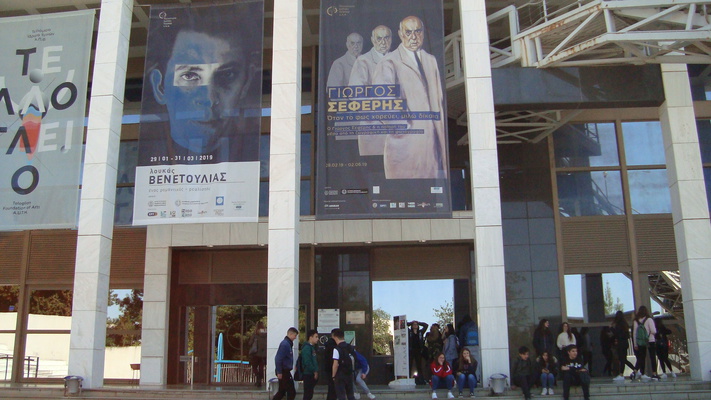
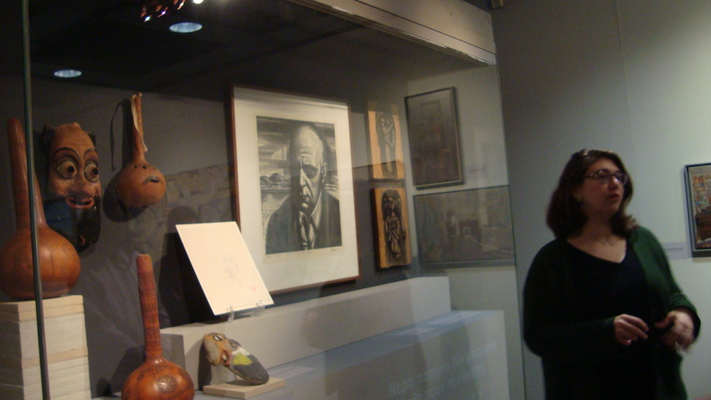
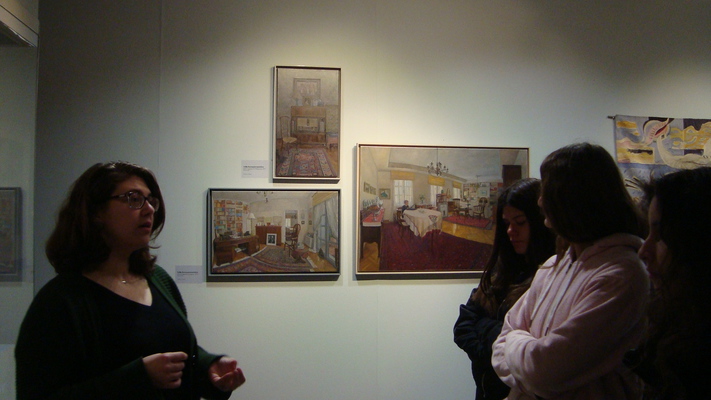
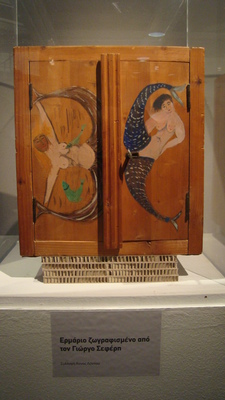
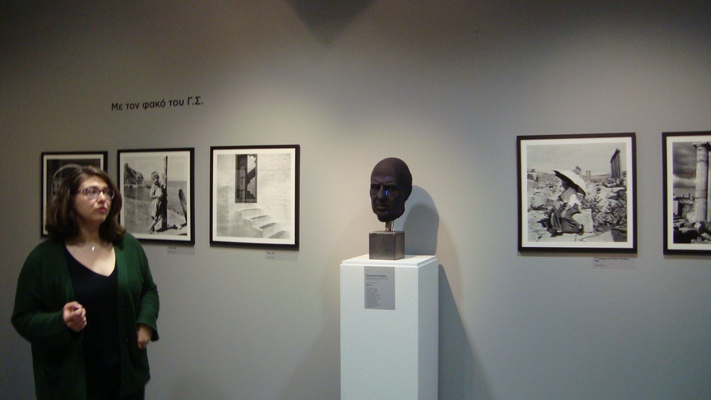
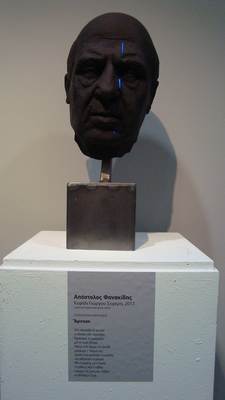
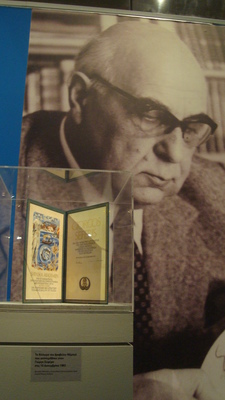
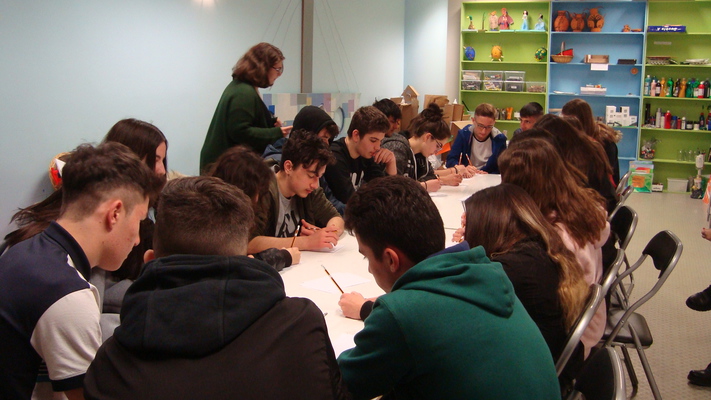
ATTENDING THE THEATRICAL PERFORMANCE "EPTAPYRGIO - A CENTURY IN A DAY 1899-1989" (GENIKO LIKIO HORTIATI - P11 ACTIVITY)
July 17, 2019, the pupils of the Erasmus+ project of our school and Ms. Maria Mangana attended the theatrical performance “Eptapyrgio - A Century in a Day 1899-1989” in the framework of the 1st Eptapyrgio Festival. A theatrical narrative of Eptapyrgio, a place with powerful memories of many centuries, forming part of the history of Thessaloniki. Actors and musicians from the National Theatre of Northern Greece took us on a track of the history of Eptapyrio, from 1899 to 1989, through human stories with sighs, music, pains and joys, strange and tender. A journey from darkness to light. Because no matter how tall the walls are, the sky is always open….
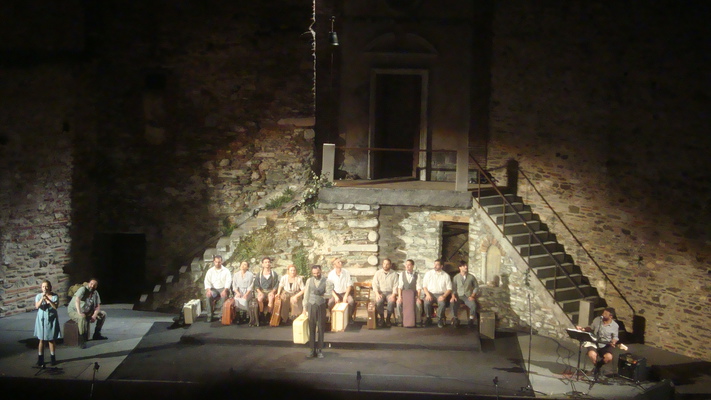
The 1st Eptapyrgio Festival was organized by the Cultural Center of the Region of Central Macedonia in collaboration with the Ephorate of Antiquities of Thessaloniki under the auspices of UNESCO. The Eptapyrgio Festival is a cultural continuation of the activities of the Cultural Center of the Region of Central Macedonia in historical sites, incorporating the monuments of Thessaloniki into the daily lives of the citizens, so that they are used not only as museum sites but also as living spaces of culture and spirit.
References
https://www.ntng.gr/default.aspx?lang=el-GR&page=2&production=51438
DEEPENING IN THE MUSICAL THEATER PERFORMANCE "EROTOKRITOS" BY VITSENZTOS KORNAROS (P12 ACTIVITY - GENIKO LIKIO HORTIATI)
On July 26, 2019, the pupils of the Erasmus+ project of our school and Ms. Maria Mangana attended the musical theater performance "Erotokritos" by Vitsenztos Kornaros. The performance was held by the Theater Group of the Friends of the Sitia Music Association and the Sitia Municipal Philharmonic Orchestra at the Municipal Garden Theater in Thessaloniki.
This masterpiece combines the Greek and Western literary tradition and highlights the unique cultural identity of Crete. Erotokritos marks an entire era for the Greek musical tradition, greatly defining the linguistic idiom of Crete. It praises love, friendship, virtue, bravery. It highlights the ideals of all the Greeks who are still identified with the characters of the play.
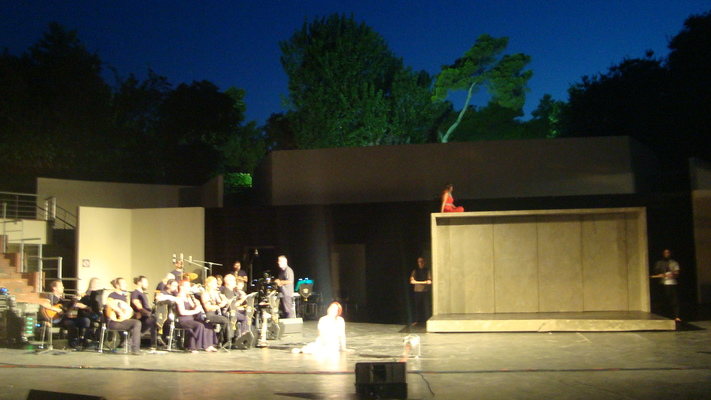
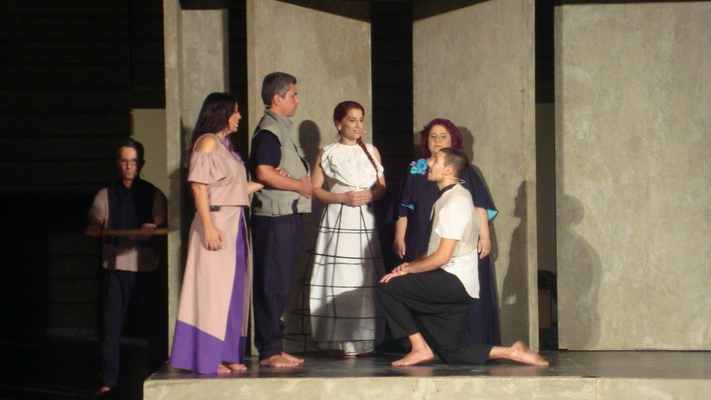
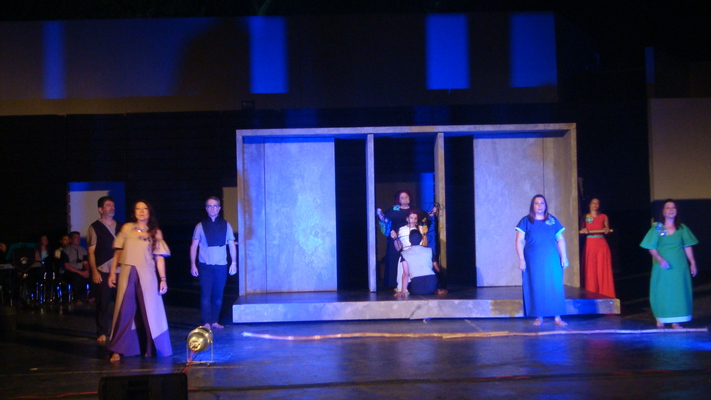
“Erotokritos” is characterized as a narrative poem or a romance novel. The verses (over 10,000) recount the phases of the love of two young men, Erotokritos and Aretousa, until they get married. The story highlights the virtues of honour, friendship, bravery and courage.
Vitsenztos Kornaros, as a poet of the Renaissance and as a Greek, chooses ancient Athens as the place of action, but the world displayed is a complex construct which does not correspond to any particular historical period. Alongside references to classical Greece , there are anachronisms and many elements from Western Europe, such as the jousting competition. The poet is divided in the following five parts:
I. After several years of marriage, a daughter (Aretousa) is born to the King of Athens (Heracles) and his wife. The son of the faithful adviser to the king (Erotokritos) falls in love with the princess. Because he cannot reveal his love, he sings under her window in the evenings. The girl gradually falls in love with the unknown singer. Heracles, when he learns about the singer, organizes an ambush to arrest him, but Erotokritos with his beloved friend kills the soldiers of the king. Erotokritos, realising that his love cannot have a happy ending travels to Chalkida to forget. During his absence, his father falls ill and when Aretousa visits him, she finds in the room of Erotokritos a painting of hers and the lyrics he sang. When he returns, he discovers the absence of his drawing and songs and learns that the only person that visited them was Aretousa. Realizing that his identity was revealed and that he may be at risk, he stays at home pretending to be ill. Aretousa sends him a basket of apples to wish him well and as an indication she shares his feelings.
II. The king organizes a jousting competition for the entertainment of his daughter. Many noblemen from around the known world participate and Erotokritos is the winner.
III. The couple begins to secretly meet under the window of Aretousa. The girl pleads with Erotokritos to ask her father to allow them to marry. Naturally, the king is angry with the audacity of the young man and has him exiled. Simultaneously a marriage proposal for Arethusa arrives by the king of Byzantium. The girl immediately gets engaged secretly to Erotokritos before he leaves the city.
IV. Aretousa refuses to consider any marriage proposals and is imprisoned by the king alongside her faithful nanny. After three years, when the Vlachs besiege Athens, Erotokritos reappears, his true identity concealed through magic. In a battle he saves the life of the king and gets wounded in the process.
V. In order to thank the wounded stranger the king offers him his daughter as spouse. Aretousa refuses to accept this marriage and in discussion with the disguised Erotokritos she persists in her refusal. Erotokritos submits her to tests to confirm her faith and finally reveals himself after breaking the spell that concealed his identity. The king accepts the marriage and reconciles with Erotokritos and his father, and Erotokritos ascends to the throne of Athens.
The direct model of the work is the French popular medieval romance “Paris et Vienne” written by Pierre de la Cépède, which was printed in 1487 and was widely circulated, having been translated to many European languages. Kornaros most likely became familiar with the French original through the Italian translation, since he was unlikely to understand French. He adapted the original creatively and his adaptation displays some merits compared to both the original and other adaptations. The plot is better structured, the characters fewer, some repetitions are reduced and there is more emphasis on the development of the psychology of the heroes. The first part of the work follows the original. The two works differ significantly after the failed marriage proposal.
The work “Erotokritos” was very popular and circulated in manuscript form throughout the 17th century. In 1713 it was printed in Venice by some Cretan who had collected several manuscripts of the work.
Four centuries after “Erotokritos” was written, it is still up to date. Erotokritos praises the virtues of true love, friendship, courage and patriotism, and this is the reason for its later popularity all over Greece. It was a source of inspiration for Dionysios Solomos and influenced Greek poets as diverse as Kostis Palamas, Kostas Krystallis, and George Seferis. A complete translation to English was made by Theodore Stephanides in verse, and by Betts, Gauntlett and Spilias in prose. Several groups of renowned Cretan musicians have added selected parts of the poem to their music, often exploring the boundaries of their local musical tradition.
A work that blends Italian and Western culture in harmony with Byzantine standards and Cretan folk tradition giving rich cultural and spiritual crops. We all enjoyed this remarkable transfer of the work of the Cretan Renaissance by the theater group of the Friends of the Sitia Music Association and the Philharmonic Orchestra of Sitia Municipality , which is also the birthplace of Vitsenztos Kornaros.
References
https://en.wikipedia.org/wiki/Erotokritos
http://ebooks.edu.gr/modules/ebook/show.php/DSGL-A111/262/1916,6363/indexB6_2.html
RESEARCHES ON LOCAL ARTISTIC AND ECONOMIC OPPORTUNITIES (GENIKO LIKIO HORTIATI - P18.2 ACTIVITY)
On 23 December 2019, the pupils and teachers of our school watched at Olympion Cinema Thessaloniki the documentary “The Great Fire of Salonica in 1917: Birth of a City”, an archives-based documentary narrating the experiences of Thessaloniki’s residents during the biggest and most destructive fire in the history of the city.
This documentary was suggested by a group of students of the Erasmus project who have already watched it on 11 November 2018 at the Town Hall of Pilea-Hortiatis during the first presentation of the film in our municipality.
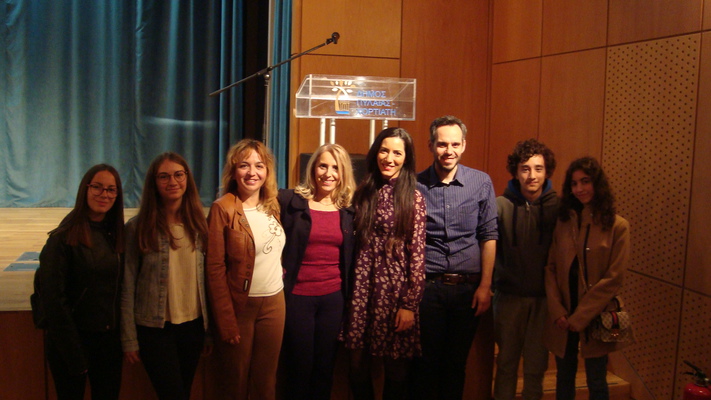
After watching the documentary, Ioannis Katsenis, pupil of B Class, interviewed the director of the documentary Grigoris Vardarinos, searching for local artistic and economic opportunities in the field of historical documentaries.
Question: What did you study to be a director and what is your work as a director?
Answer: I graduated from the Film and TV Studies Department of the New York University. I also have a master's degree in Film Directing from the University Of Edinburgh School Of Fine Arts, where I studied on a scholarship from the Onassis Foundation.
I have directed award-winning documentaries and short films in collaboration with ERT (the National Channel), the OTE HISTORY channel and the Hellenic Cinema Center.
Question: What was the trigger that prompted you to turn to the field of historical documentaries and to the documentary about the fire in Thessaloniki in 1917?
Answer: The history of Thessaloniki is a field that interests me very much, as I was born and grew up in Thessaloniki and I always wanted to delve into the history of my city through my work as a director.
While researching with my collaborators on the history of Thessaloniki, we came across the album of Aleka Gerolympou "THE TIME OF THE GREAT FIRE Thessaloniki August 1917". The testimonies about the fire were so brilliant that it immediately caught our attention and we appreciated the potential that existed to tell an interesting story to the public.
It was a happy occasion that the 100th anniversary of this significant event was approaching. We felt that it would be a good opportunity to finance the documentary as there was the motivation of the topicality of the issue, which is unknown to the general public, especially outside Thessaloniki.
The search for the documentary lasted several months. Together with the screenwriter Anastasia Bartzoulianou, we had to spend many hours in university and municipal libraries, in the archives of Thessaloniki, as well as in the digital archive of the newspapers of the Library of the Greek Parliament to collect the material. Through our research, we have identified the most trained scientists on the subject, such as the Professor Aleka Karadimou-Gerolympou, who, in addition to her academic research on the subject of the fire of Thessaloniki in 1917, has published dozens of studies, essays and books.
The final result of the documentary on the History of the fire of 1917 in Thessaloniki, lasting 62 minutes, was the result of a team work with the journalist-screenwriter Anastasia Bartzoulianou, the author Philipos Mandilaras, the documentary moderator Giannis Karabelas, the music composer Dimitra Sideridou, the narrator (actor) Dimitris Tsilinikos and the photography director Dimitris Stampolis.
Question: Do you think that you had the appropriate state support or European funding?
Answer: Unfortunately, in Greece there is not enough state support for such creations and all the help comes from sponsorships mainly by individuals that emerges after a constant search.
Question: Was this documentary shown outside Greek borders? If so, what was the response?
Answer: The documentary premiered at many international festivals in Greece and abroad, such as the 12th Los Angeles Greek Film Festival, the International Historical Documentary Festival in Burgas, Bulgaria, the New York City Greek Film Festival, and the Istanbul International Architecture and Urban Films Festival (Constantinople International Festival) “Τhe Cinema of Architecture and Cities” in which we received one of the four awards of the institution, the 2nd in the category of documentary.
WATCHING THE THEATRICAL PLAY “A FAIRYTALE FOR TWO” (GENIKO LIKIO HORTIATI - P18.3 ACTIVITY)
On 28 January 2020, the pupils of the Erasmus+ project of our school (B and C Class) attended the theatrical play “A fairytale for two”, a new production of the Youth Stage of the National Theatre of Northern Greece at the Theater of the Monastery of Lazarists. The play was written by the British author Philip Ridley, translated by Xenia Kalogeropoulou and directed by Alexandros Raptis.
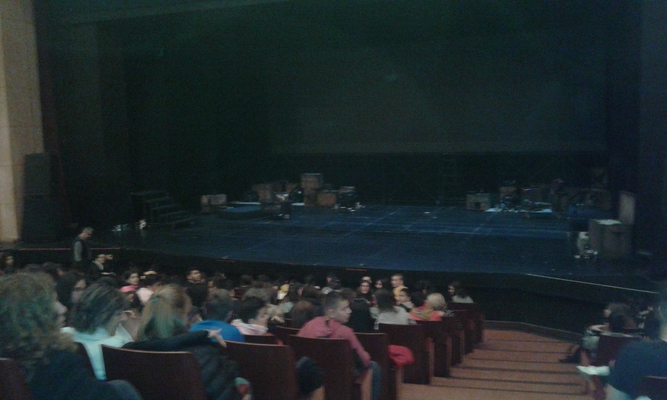
Two teenagers, Kevin and Sandra, meet on the stage of an amateur theater in an abandoned cultural space. Against the backdrop of a painted landscape, the two young men try to escape from the reality they live in, to be transferred to "elsewhere" and from there to look at life again in a different way. In the cold room, they open their hearts, tell their stories and find that "four eyes see better than two."
Meropi Kougioumtzoglou, pupil of B class wrote about the play: “The show has many strong points but also some weaknesses. Initially, the performance of the protagonist Pericles Siountis was excellent, as he managed to show the character of a 15-year-old teenager who, despite the family difficulties he experiences, maintains his energy and creativity, absolutely realistically and with unpretentious speech. I was not satisfied with the interpretation of the girl, because she lacked naturalness and spontaneity. This fact downgraded the entire show, as long as it relied almost entirely on the abilities of the two actors.
The main disadvantage of the play was the repetitive elements, as far as the script is concerned, and the blurred structure. For example, the idea of creating a play with a strong fairy tale element by the two young people was apt, but it was used too many times during the play. The choreography did not impress me very much, as I think they needed improvement.
With the help of music and new media (animation, video wall) the work took on a modern and original character and found a point of contact with the young audience. However, I would like to note that in his attempt to attract the young audience, he used stereotypical perceptions of the youth and its difficulties, aiming to impress”.